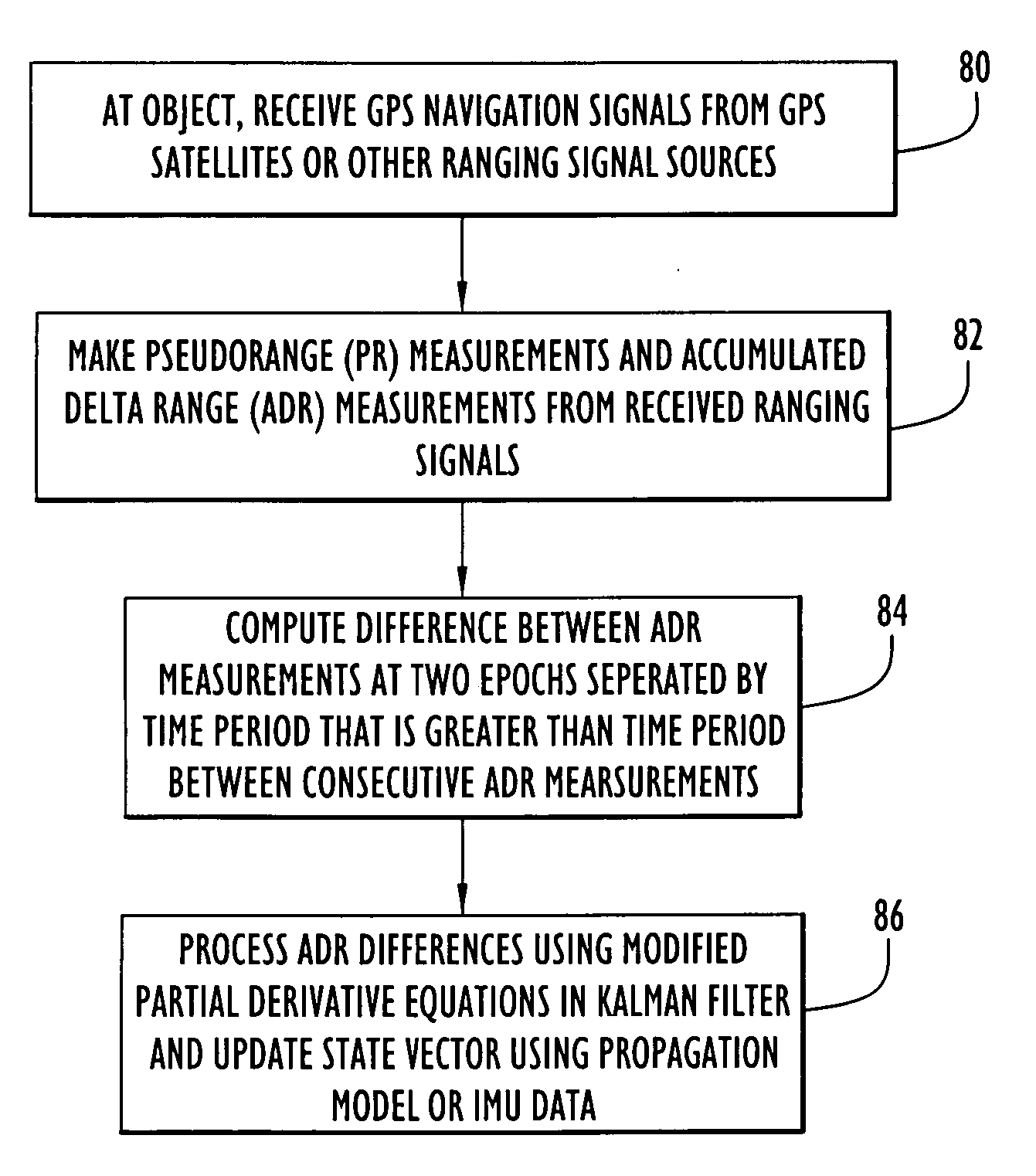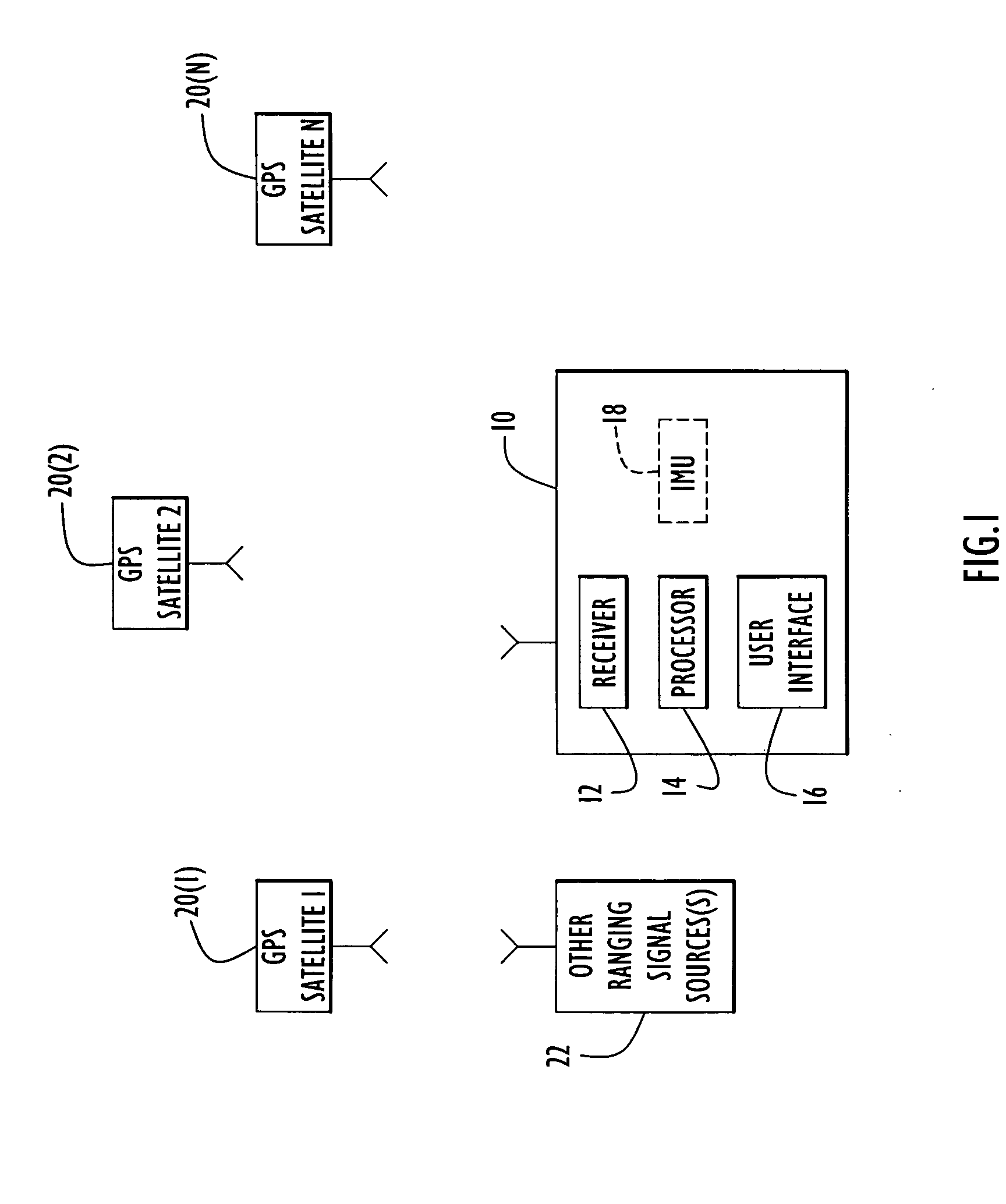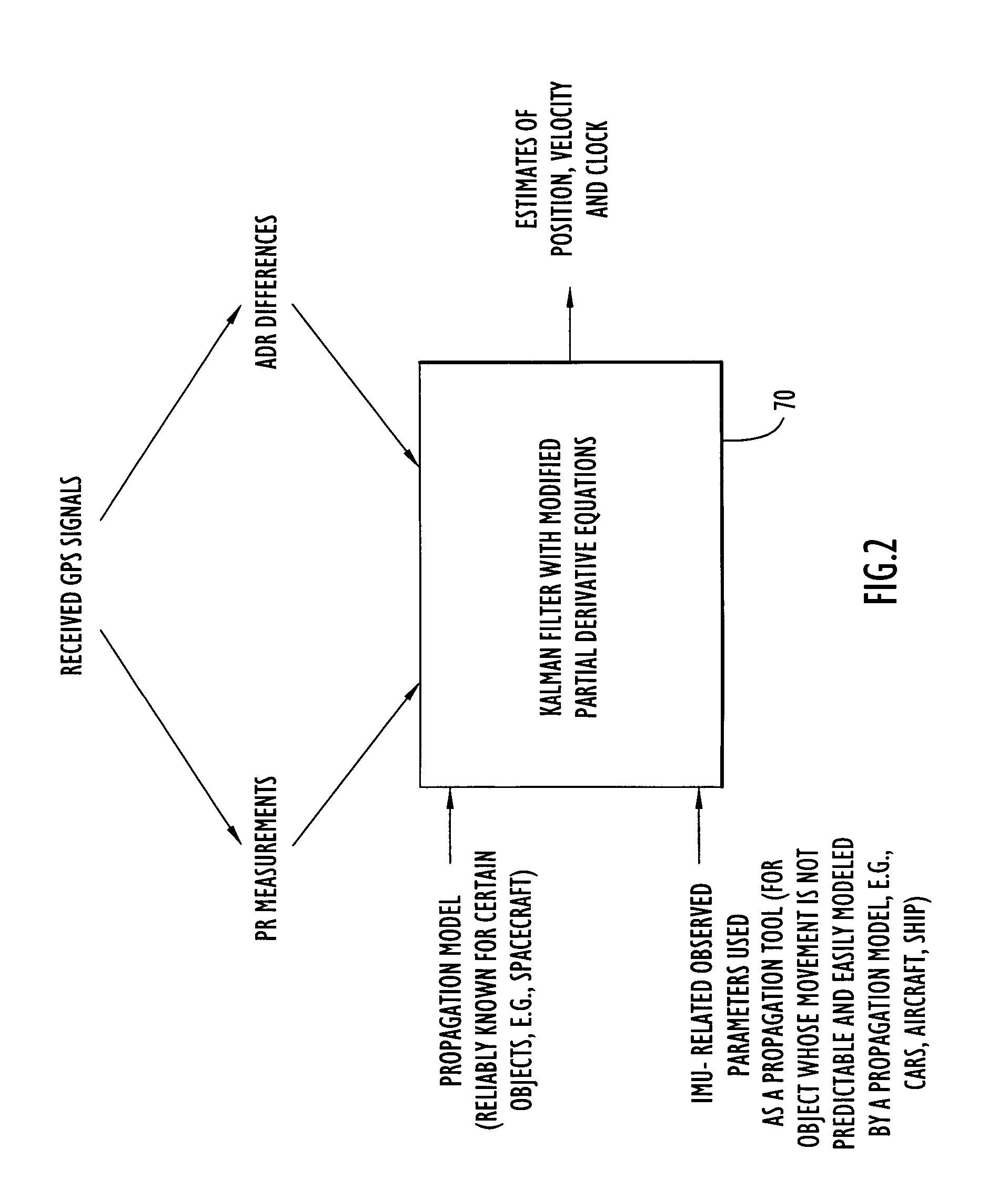GPS accumulated delta range processing for navigation applications
- Summary
- Abstract
- Description
- Claims
- Application Information
AI Technical Summary
Benefits of technology
Problems solved by technology
Method used
Image
Examples
Embodiment Construction
[0026]FIG. 1 illustrates an environment where the navigational techniques described herein are useful. An object 10 is shown whose position is to be computed from signals received from a plurality global positioning system (GPS) satellites 20(1) to 20(N). The object 10 may be a spacecraft such as a satellite or space vehicle, earth land or air vehicle (e.g., car, truck, tank, airplane, helicopter, ship, etc.). The object 10 has a receiver 12 that is capable of receiving signals from the GPS satellites 20(1) to 20(N), a processor 14 that makes measurements from the received signals and computes the position, velocity, direction, etc., of the object, and a object interface 16 (such as a keyboard and display) to convey navigational information to a human, if desired. In addition, the object may include an inertial measurement unit (IMU) 18 that outputs measurement data for acceleration and rotation rate of the object. The processor 14 performs computations on measurements derived from ...
PUM
 Login to View More
Login to View More Abstract
Description
Claims
Application Information
 Login to View More
Login to View More - R&D
- Intellectual Property
- Life Sciences
- Materials
- Tech Scout
- Unparalleled Data Quality
- Higher Quality Content
- 60% Fewer Hallucinations
Browse by: Latest US Patents, China's latest patents, Technical Efficacy Thesaurus, Application Domain, Technology Topic, Popular Technical Reports.
© 2025 PatSnap. All rights reserved.Legal|Privacy policy|Modern Slavery Act Transparency Statement|Sitemap|About US| Contact US: help@patsnap.com



